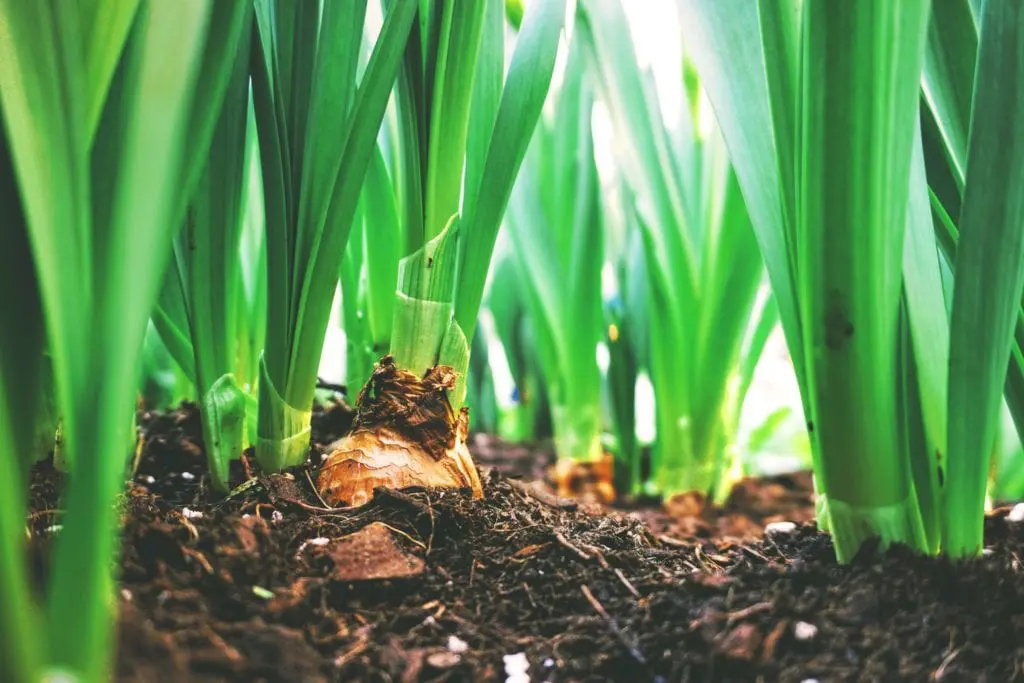
Conserving water is a proactive step to reduce future droughts, rising water costs, reduced food supplies, health hazards, political conflict, the amount of energy required to process and deliver water. Water is also used by many businesses and in recreational activities, as well as to beautify our surroundings, so protecting our supply protects the long-term quality of our lives.
How Your Yard and Garden Can Thrive on Less Water
While regular watering is a crucial component of yard and garden maintenance, it isn’t difficult to have a yard that thrives on less water than most homeowners use. In this article, we’ll share four features of a garden that help you conserve water in your yard.
Irrigation Design
While many homeowners consider how to irrigate the garden they have, thinking about water first makes it easier to have conservation built-in, rather than as an afterthought. If you design the irrigation and landscape in tandem, even better! It’s best to work with a professional irrigation specialist (especially one that is certified in water conservation by WaterSense, QWEL, or one of the many other certifying bodies) because they understand which methods and equipment will work best for your needs, and they know all of the latest technologies available.
An irrigation specialist who utilizes rainwater harvesting is ideal. According to landscape architect Owen Dell, “[R]ainwater harvesting, done properly, is an essential element in a sustainable landscape.” An experienced irrigation specialist will save you an incredible amount of frustration, time, and possibly even money than going the DIY route. One that utilizes rainwater harvesting will also save you money.
Landscape Design
A landscape designer who understands water conservation is worth their weight in gold! They can design a garden that suits your aesthetic preferences while being mindful of sustainable practices and water use.
“Whether you hire a designer or choose this undertaking for yourself, consider that one of the most overlooked aspects to sustainability is thinking local and using techniques that are not only sustainable but also regenerative and environmentally responsible,” explains landscape designer Todd Haiman. “Most of these ‘techniques’ are not new, but have been around for generations and are based in common sense principles.”
The single largest water consumer on residential properties is a manicured lawn. Because many of the desirable green turf grasses are not native, they require a huge amount of water to maintain during summer. A landscape designer knows how to strike the right balance between a beautiful lawn and sustainable design.
Plant Choice
Have you ever planted something in your yard that just shriveled up and died, in spite of your best efforts? That is far less likely to happen if you plant native flowers and grasses. Native plants are already suited to the soil, water, and weather conditions around your home. Many of them require little to no effort in order to thrive once established. Make sure your landscape designer is knowledgeable about native plants and can help you find the best ones for your yard and lighting conditions.
Native plants are fantastic if you want to create a hospitable for local bees, butterflies, and other wildlife, great for the biodiversity of a yard. Some garden centers specialize in native plants. If you go to one that doesn’t, be aware that the staff often aren’t very knowledgeable about what is or isn’t native. You may need to do your own research or rely on your expert landscaper.
It is helpful to know that there are naturalized plants that adapted to local conditions, but it is best to avoid aggressive invasive plants that overtake other plants and be difficult to contain. According to landscape designer Larry Weaner, “A number of exotic species have naturalized so aggressively into our woods, meadows and wetlands that the natural plant diversity of these areas is destroyed.”
Know Your Variables
Beyond choosing the right plants, their placement, and a good irrigation system, there are a number of other variables that impact how much water you use. The when you water, for example, greatly influences if your plants get enough or too much water, as well as how deep roots grow. If you water during the day, you lose a lot of water to evaporation. If you water at night, plants may end up with too much moisture and develop root rot. The best time to water is early in the morning, before temperatures rise, so that the roots have enough time to properly absorb the water they need. If there is too much water in the soil, the rising daytime temperatures will help dry it out.
Most lawns need 1 inch of water per week, applied during a single watering or divided into two 1⁄2-inch waterings during the week.
If you’re not sure how long it takes for your irrigation system to deliver 1 inch of water, there’s a simple way to test it. Take a few clean, empty tin cans and place them in different spots around your yard and measure how long it takes to collect 1 inch of water in each can. For many systems, this means watering twice a week for 15 minutes each time. Sprinkler coverage may vary, so use the average time it takes to fill all of the cans. Keep in mind that the 1 inch per week is an annual average, so there are times of the year when a yard will need more or less water, depending on the season.
In states with higher water usage, many counties will regulate water usage and only allow yard watering on certain days or forbid it altogether if there is a drought. Find out if there are any such regulations where you live to avoid fines and overwatering.
While all of this may seem complicated, it’s actually pretty simple. If you hire professionals to help you, not only will they get everything designed and installed, they will train you on proper care and maintenance, taking out the guesswork. There’s a lot to lose by not conserving water, but you can easily conserve water and still have a beautiful yard. Get started today by contacting an irrigation specialist or native plant landscape designer near you.

For the last 16 years, Rachel Kinbar has been a writer of articles, blog posts, white papers, essays, infographics, web copy, sales copy, scripts, poetry, lyrics, and more. She has keen research skills that she applies to a wide variety of topics, and she especially loves topics related to design, history, and sustainable living.
 10 Reasons Why a Townhome Is the Perfect Home for You
10 Reasons Why a Townhome Is the Perfect Home for You